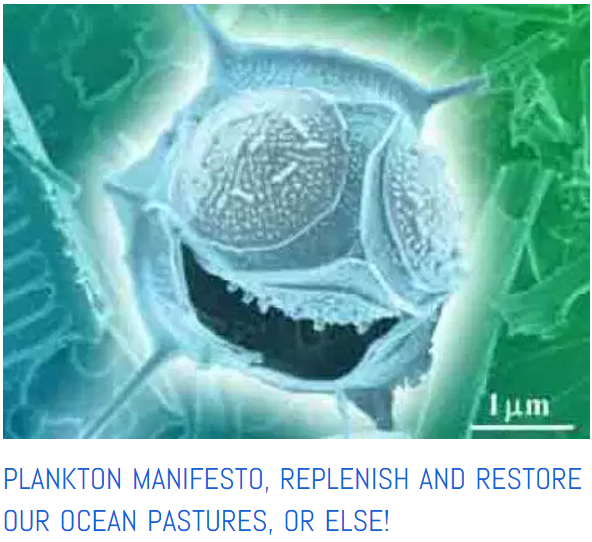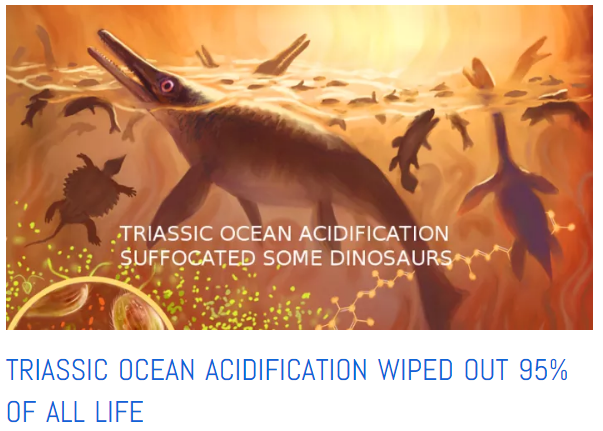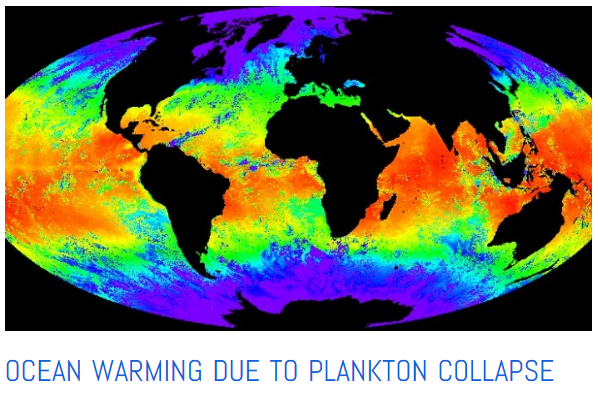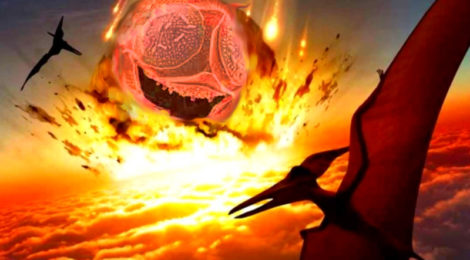
Surface Dwelling Plankton Found Responsible For Past Mass Extinctions
Plankton Bloom Variability Caused Many Mass Extinctions
Confirming the ocean pasture plankton as the most powerful force of Nature on this blue planet.
Scientists have discovered the cause of a mass extinctions of sea-floor marine organisms 800,000 years ago. In a new study published in the journal Nature Communications, scientists from the universities of Nottingham and Durham and the British Geological Survey (BGS), have discovered the cause of a mass extinction within marine organisms called foraminifera. Foraminifera are an important group in relation to biomass in the deep ocean and the cause of their extinction was previously unknown.
Scientists tested various possible causes for the mass extinction and were able to discount others such as ocean cooling. Instead, they discovered that the extinction was caused by a global change in plankton at the surface of the ocean. Especially in the vital plankton known as cocolithophores, our old friend Pico and his kind.
.
Other mass extinctions such as one that took place during the Triassic epoch where most of all life on Earth disappeared have also been correlated to collapse of natural ocean CO2 management, that means phyto-plankton!
.
.
Phyto-Plankton The Most Powerful Force Of Nature Create and Sustain Their/Our Goldilocks Zone
The phytoplankton including coccolithophores are the most powerful force of nature with regard to modifying the environment of this Blue Planet. They have for hundreds of millions of years been actively modifying and controlling this blue planet to make it to their liking. And just like Goldilocks they don’t like it too hot, nor too cold, they like it just nicely warm…. ahhhh just right.
Their vast power of photosynthesis actively works with available nutrients, aka CO2 and mineral-rich dust, to sustain the balance of Nature in the ‘Goldilocks Zone.’ In doing so they produce almost all of the oxygen that the rest of us breathe. They constantly aqua-form this planet by being the principal source of clouds which they need as sunscreen to keep their environment in their, and our, comfort zone. They are capable of responding over time, as in slow geologic time, to be more or less in abundance. When their universe smiles on them they fill our seas with life.
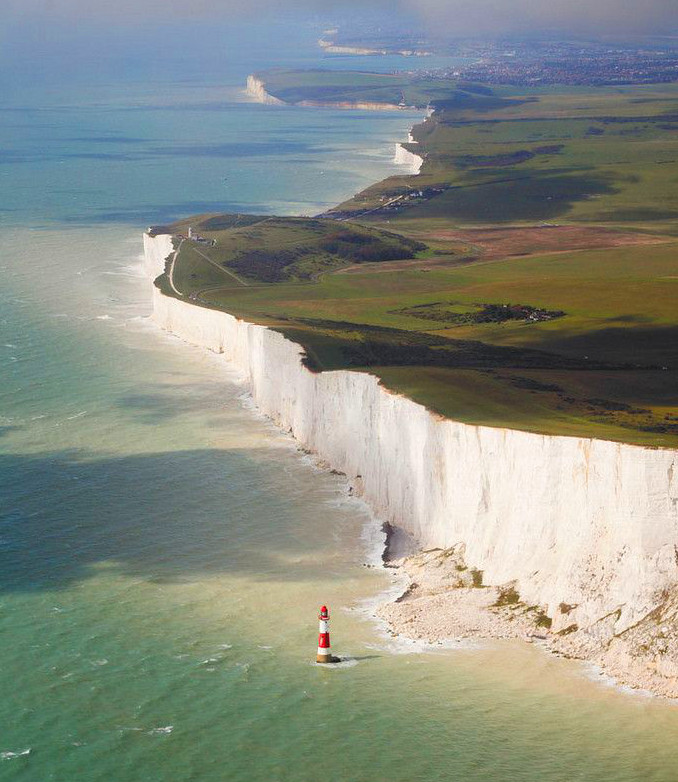
Cocolithophores make up the White Cliffs of Dover that are composed of trillions of tonnes of the calcium carbonate shells of this force of nature. Click to read a related paper
The cocolithophores are an especially abundant form of phytoplankton and a principal food source for seafloor-living foraminifera, and are an important group of organisms at the base of the food web for all life in the ocean (for example, krill, fish, whales). They ‘bloom’ at certain times of the year in such numbers that it is sometimes visible from space.
Dr Sev Kender – University of Nottingham, said: “We discovered that the sea-floor foraminifera probably went extinct because their food source changed, becoming more variable throughout the year.
“This is important as it has been an enigma, and because future climate change will impact on plankton and therefore the deep ocean biosphere. We have shown that surface ocean changes can adversely impact deep-sea communities.”
“We know that human activities have caused the extinction of many life forms already, and there is widespread interest in trying to minimise this impact in the future. Understanding how sensitive life is to environmental change is therefore potentially important,” says Dr Kender.
“We have discovered what caused a mass extinction (many past extinctions are not yet understood), and we have shown that the deep ocean biosphere is sensitive to changes in surface ocean biology, which is being impacted by human-driven environmental change.”
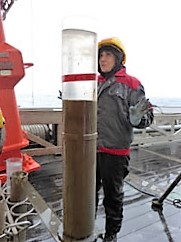
Ocean bottom samples under study aboard ship
The study forms one part of a large Natural Environment Research Council (NERC) Project aiming to reconstruct how climate change in the past implicated the oceans, specifically over the past three million years. This is in terms of ocean temperature, circulation, and life in the oceans.
NERC Project Leader Dr Erin McClymont, said “The novelty of our approach comes from our study of both the pattern of the extinction and the properties of the water in which those organisms were living. This allowed us to directly test which factors might have caused the extinction event.”
While the authors of this most recent paper openly worry about the changes wrought upon the ocean plankton world by our technological age they do little but mimic the all too common finger-pointing at the usual suspects, aka climate change. Their fine research though makes it very clear as to what we must do if we are to mitigate the terrible impact of our industrial age shock treatment of CO2 is having on our Blue Planet landlords the phytoplankton.
In related news from an obscure scientific journal of applied mathematics comes a report on just how perilously close we are today to another mass extinction event. A study of ocean plankton led by Sergei Petrovskii, Professor in Applied Mathematics (specializing in ecological mathematics) from the University of Leicester’s Department of Mathematics, has shown that an increase in the water temperature of the world’s oceans of around six degrees Celsius – which some scientists predict could occur as soon as 2100 – could stop oxygen production by phytoplankton by disrupting the process of photosynthesis. The paper Mathematical Modelling of Plankton–Oxygen Dynamics Under the Climate Change was published in late 2015 in the Journal Applied Mathematics.
A Simple Prescription For Our Blue Planet
We simply must make every effort to undo the harm we are doing to our Goldilock’s Zone. Fortunately, by helping the phytoplankton help us all they can in a fraction of the time it has taken us to upset the balance of Nature restore it to recent historic health and abundance. Here’ a link to how. Restoring Ocean Plant Life.
Note: Apologies for artistic liberties taken with the Cocolithobolides and Foramateradactyls in the top image 😉









